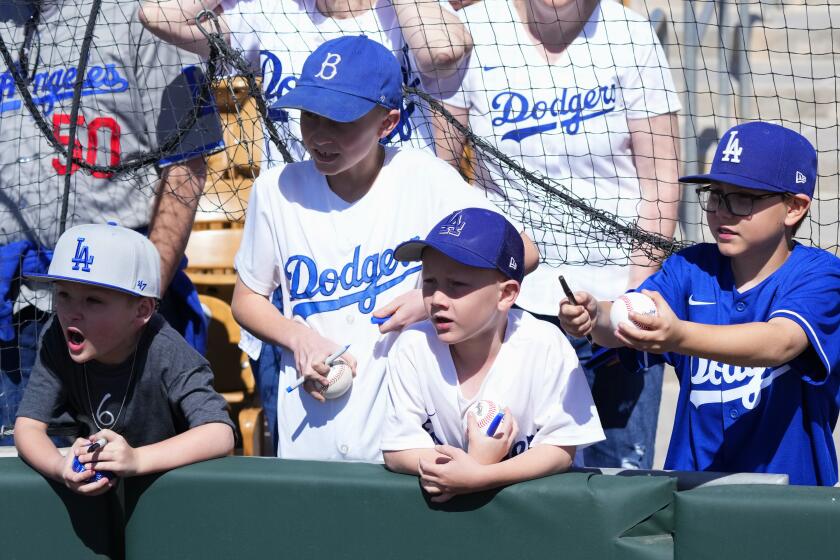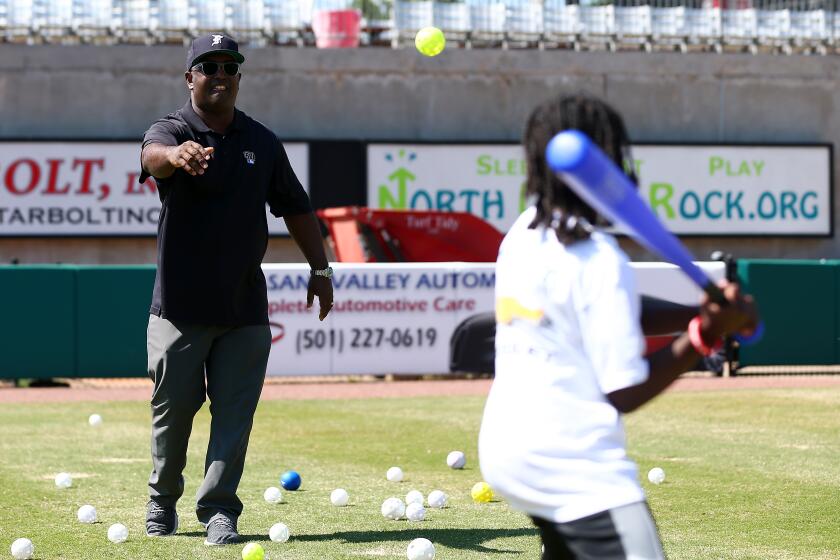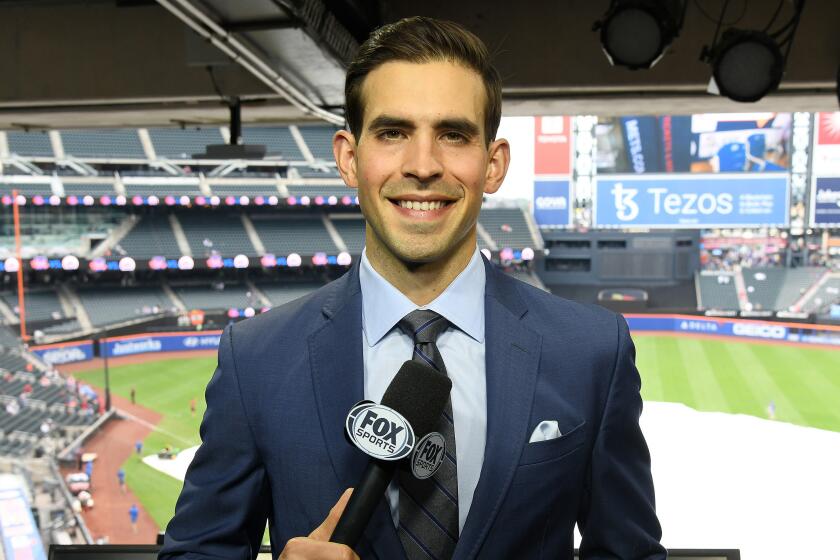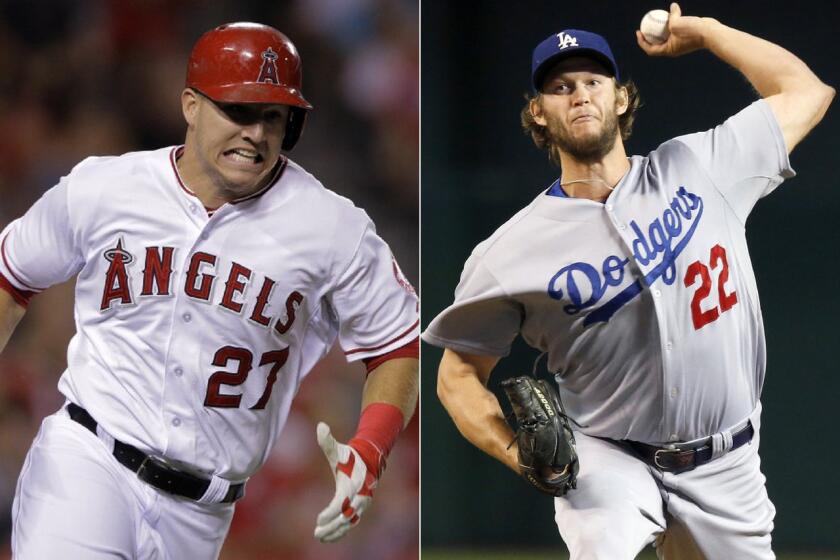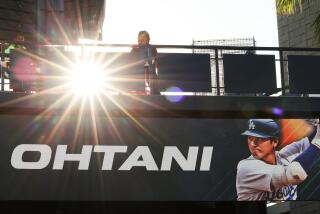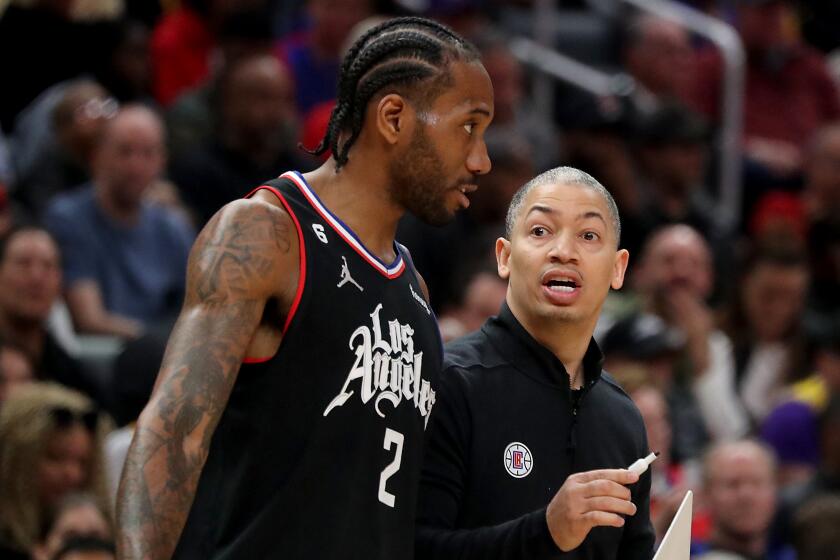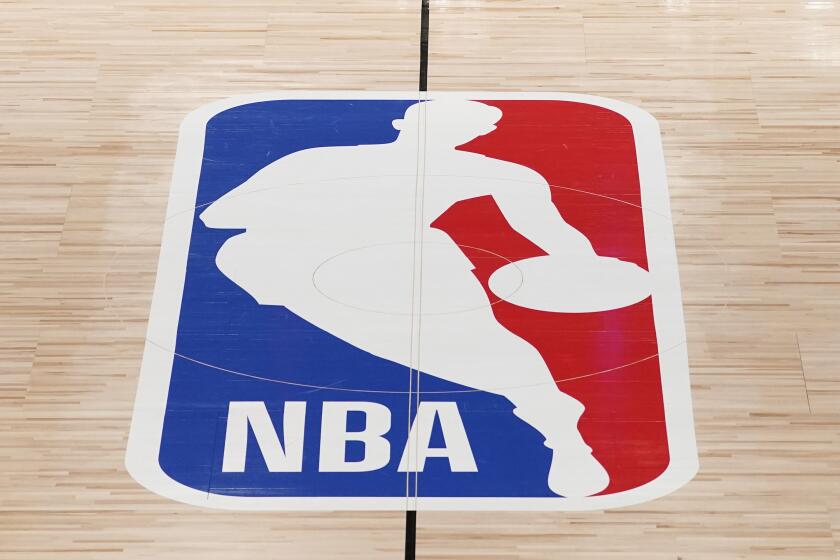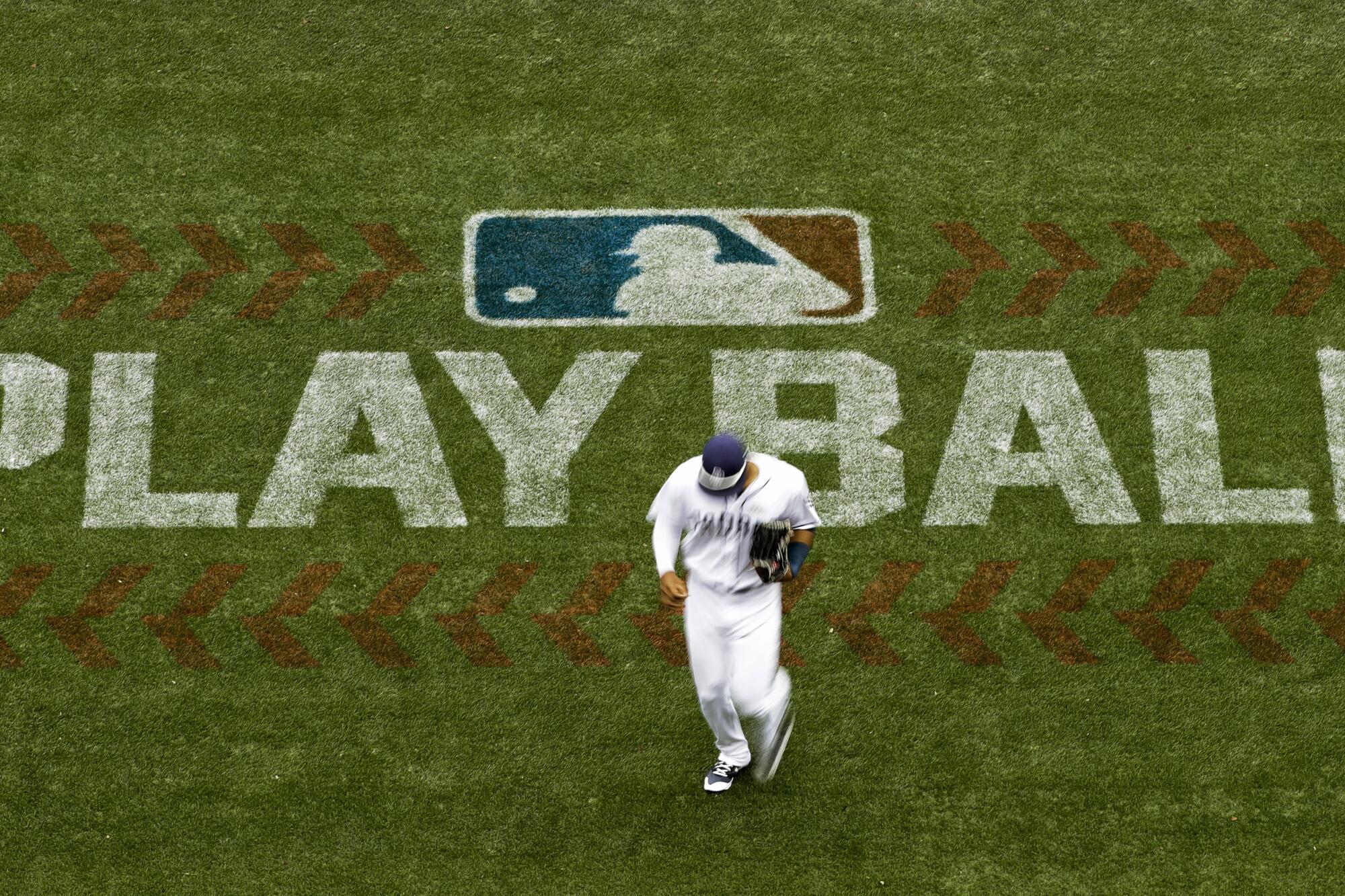
- Share via
NEW YORK — No sport reveres statistics more than baseball, and no statistic could have been more alarming for the sport than this one: In 2017, the Sports Business Journal reported the average age of a fan watching a baseball game on television was 57 years old.
It was one number in a sport drowning in numbers. But it was the one number that indicated the sport itself could be drowning. If your average fan can order from the senior menu at Denny’s, your past might look better than your future.
No sport is guaranteed a vibrant future. A century ago, the top three sports in America were baseball, boxing and horse racing. The latter two sports are close to dead today, and maybe there was something to that “baseball is dying” chorus.
“You have to continue to capture the next generation, or it is an existential threat to the sport,” Rob Manfred, the commissioner of Major League Baseball, told me this spring.
“As much as we love the thought that we are the national pastime, I think resting on your laurels is a really bad business strategy.”
An Ipsos poll of 1,035 American adults in January found that baseball was the second-most liked sport behind the NFL.
One strategy would have been to double down on the core audience, to slowly transition into a niche sport, something along the lines of Major League Soccer. A loyal fan base that numbers well into the millions is more than enough for survival.
For Manfred, who was two years into his tenure when the Sports Business Journal report was published, that would not do. The owners who elected him asked him to grow the business, not manage its decline.
“There is upside potential in the sport, and it is important for us to try to capture some of that upside potential,” Manfred said, “rather than being satisfied with a kind of stagnant fan base.”
A decade into Manfred’s tenure, the apocalyptic has not come to pass. Quite the opposite.
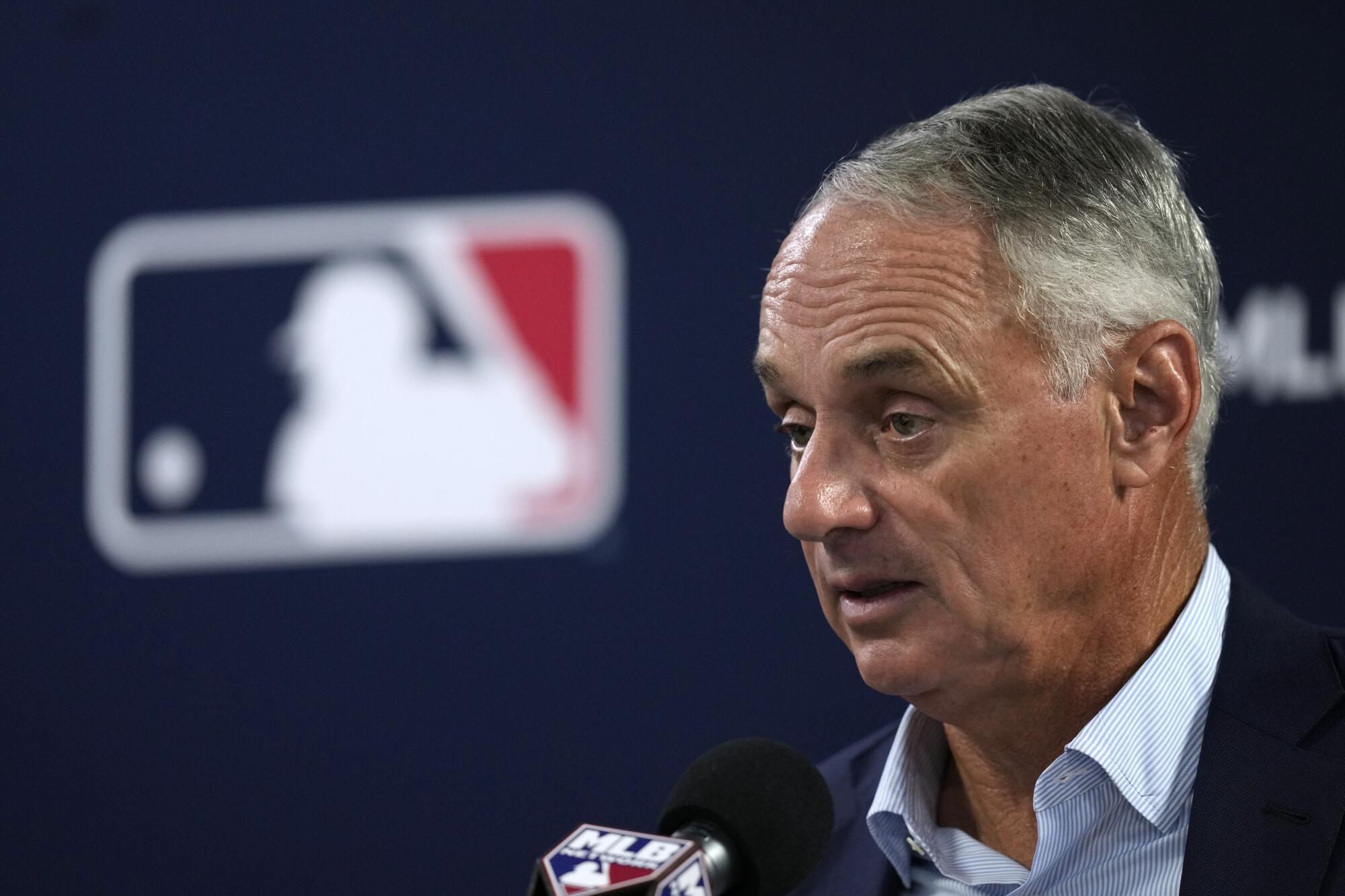
A generation that was supposed to have dismissed baseball as irreparably slow and boring and was supposed to have been lost to esports and screens of all sorts has found its way back to baseball.
Half of MLB’s television viewers last year were younger than 44, according to Playfly Insights. The median age of an MLB ticket buyer has fallen from 51 in 2019 to 45 today, according to the league.
In that time, the average age of a new fan engaging with the league’s data base — by buying a ticket or a player jersey, for instance, or setting up a streaming account — has dropped from 43 to 36.
Baseball isn’t dying, but it could have been. Its revival required a game plan.
Tony Reagins, the former Angels general manager, grew up in the Coachella Valley, where the summers are brutal.
“It’s 110 degrees every day,” he said. “But we all played baseball, and the whole town rallied around the sport. Davis Field in Indio was the place to be, every single night.”
Those Americana scenes are as rare as doubleheaders these days. The emergence of other sports, the spiraling cost of playing baseball, the increase in single-parent homes where no one might be available to take a kid from school to baseball practice — all of that and more contributed to a concerning bottom line: fewer kids playing ball.
The No. 1 predictor of whether a kid will grow up to be a baseball fan: Did he or she play the game?
In 2015, two months after he replaced Bud Selig as commissioner, Manfred created the league’s first department of baseball development and tapped Reagins to run it.
“We had youth programs,” Reagins said, “but they were kind of fragmented and siloed. Community relations had a program. Marketing had a program. Labor had a program. He reorganized all that.”
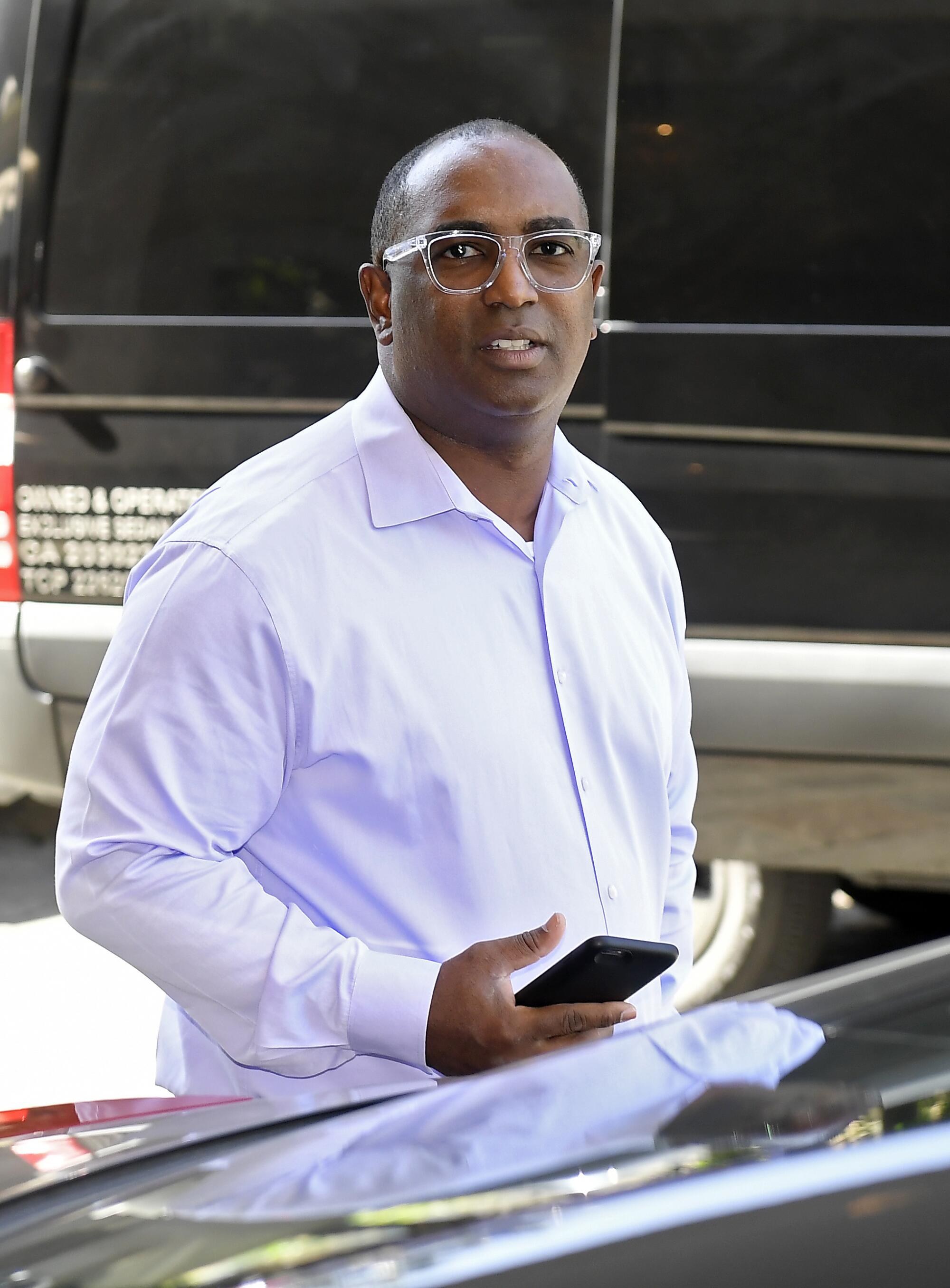
The youth programs all would run through Reagins, primarily under the “Play Ball” banner. For the first “Play Ball” program, launched three months after Reagins started, someone in the league office had to walk into a sporting goods store to buy all the equipment. On one weekend last year, 30,000 kids walked away with a free plastic bat and ball, donated by a corporate sponsor.
The “Play Ball” events are not camps, clinics or competitive events. They are about getting onto a field, running the bases and putting a bat and ball into a kid’s hands.
Major league teams put on these events. So do minor league teams, USA Baseball, USA Softball and other youth baseball and softball organizations.
So do 350 mayors across America. So does the commissioner’s office, in cities with and without professional baseball teams. So do teachers, as part of a “Fun At Bat” recreational program.
In all, the “Play Ball” programs have reached about 7 million youngsters, the league said.
It’s all free — and, Reagins said, any kid who registers with the league gets a free subscription to mlb.tv, to watch baseball. MLB also connects kids for signups with youth baseball and softball organizations, including Little League.
“We consider Little League core to what we are doing every single day,” Manfred said.
Former Angels GM and self-described ‘Boys Club kid’ Tony Reagins is committed to ‘real programs with real young people that have real impact.’
For the elite minority athlete, MLB also offers development camps and programs, helping the next generation of diverse kids become more receptive to baseball by seeing more major league players that look like them.
Although the percentage of Black players on MLB rosters has fallen from 18% three decades ago to 6% last year, according to the Institute for Diversity and Ethics in Sport, the MLB initiatives have produced 12 Black first-round draft picks over the past three years.
From 2014 — the last year of Selig’s tenure — to 2023, overall national participation in baseball rose from 13.2 million to 16.7 million, according to the Sports and Fitness Industry Assn. — an increase of 27%.
Reagins couldn’t help but remember spending two hours spreading the baseball gospel on a bumpy field in a housing project in Sacramento. The next week, a box arrived on his desk.
“I had 300 handwritten notes from these kids,” he said, “saying that baseball was their favorite sport.”
In 1999, the year after Mark McGwire hit 70 home runs and Sammy Sosa hit 66, Nike unveiled a television commercial with an enduring tag line: “Chicks dig the long ball.”
Even after the steroid era, the analytics revolution tipped the offensive scales toward sluggers. But, after 25 years of endless dingers, fans no longer dig the long ball — not, at least, at the expense of the doubles and triples and stolen bases that had been minimized by the preference for power hitters.
In surveys, MLB asked fans what plays they most hoped to see at a ballgame.
“The home run, interestingly, is not really in the top three or four,” said Morgan Sword, the league’s executive vice president of baseball operations.
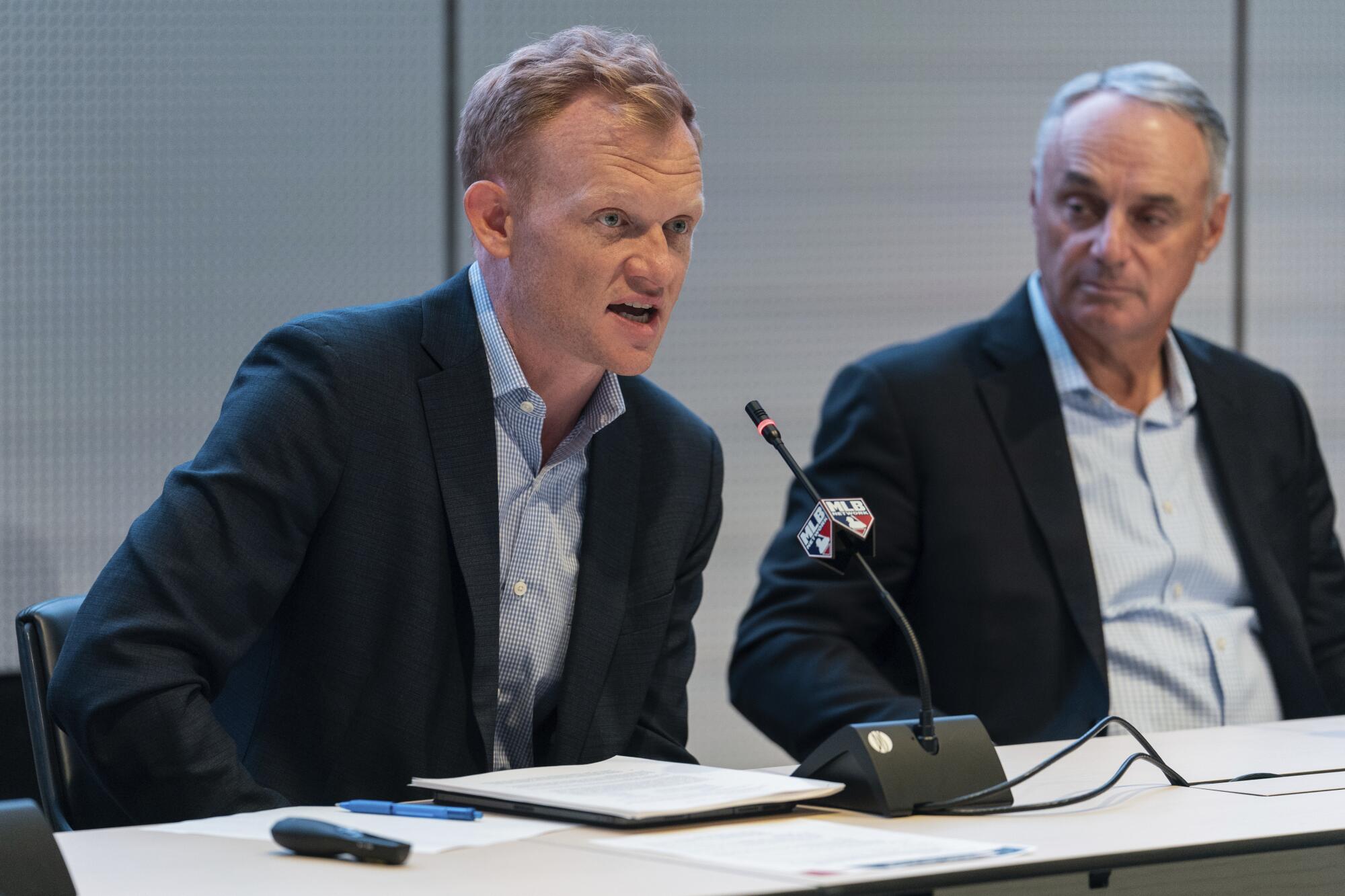
What they wanted to see: more action, a quicker pace, and shorter games — the younger the fan, the shorter the game. Fans 35 and up preferred a game time closer to 2 hours and 35 minutes; fans under 34 preferred a game time closer to 2 hours and 25 minutes.
With the introduction of the pitch clock last year, the average nine-inning game lasted 2 hours and 39 minutes — a drop from 3 hours and three minutes the previous year, and the shortest such figure since 1985. The other rule changes — restrictions on infield shifts, limits on pickoff throws, and bigger bases — led to more singles, more doubles, more triples and more stolen bases.
“It’s the plays that display the athleticism of our players,” Sword said.
To get the word out — about the new rules that would enable you to get home by 10:30 on a school night, and about everything else in baseball — MLB altered its traditional advertising strategy.
The majority of the league’s paid advertising is done not on television or billboards but via targeted digital and social media — “anywhere you would scroll on your phone,” chief marketing officer Karin Timpone said — and aimed at people under 34.
Dodgers announcer Joe Davis, the voice of Fox Sports in the World Series, talks about what he’s looking forward to seeing in Diamondbacks vs. Rangers.
And, rather than rely on game highlights and interviews with all-star players, the league has embraced all-stars from the entertainment and digital worlds, names already familiar to a younger audience.
Puerto Rican rap stars Bad Bunny and Daddy Yankee were the biggest names. However, MLB generated more than 250 million impressions — 89% of them from people 34 and under — with authentic vignettes from the likes of comedy group Dude Perfect (60 million followers on YouTube), kindness evangelist MD Motivator (18 million followers on TikTok), chatty and inspirational barber Vic Blends (15 million followers on TikTok) and next-gen youth sports outfit Overtime (95 million followers across seven platforms).
“They’re getting the word out to an audience,” Timpone said. “It’s important that they hear that part of it before they see a buy-a-ticket message.”
Noah Garden, the league’s deputy commissioner for business and media, would like to make one thing perfectly clear: He believes this story is based on a defective narrative.
He cherishes a younger audience — who wouldn’t? — but he never bought into the alleged crisis triggered by that one statistic about the age of baseball’s television viewers.
MLB was a digital pioneer, so far ahead of the game that other leagues, athletes in other sports and even rock bands outsourced their websites and streaming to the league. The league spun off its technology business and Disney bought it for close to $4 billion, but not before MLB had established its streaming service as a robust alternative for young fans not watching on television. Even when Manfred took over a decade ago, MLB had close to 6 million daily users of its At Bat app, with an average age of 33.
“We had tens of millions of people using it before anybody else had an app,” Garden said. “We’ve been young the whole time.”
Nonetheless, he agrees the work of cultivating and maintaining a younger audience is far from done. On the field, the league’s focus is in finding ways to cut down on strikeouts — pitching to contact reduces the time of an at-bat; more balls in play means more action, and more flashes of the athleticism that lights up social media.
“That’s the way baseball was originally conceived: the hitter versus the defense, not the hitter versus the pitcher,” Sword said.
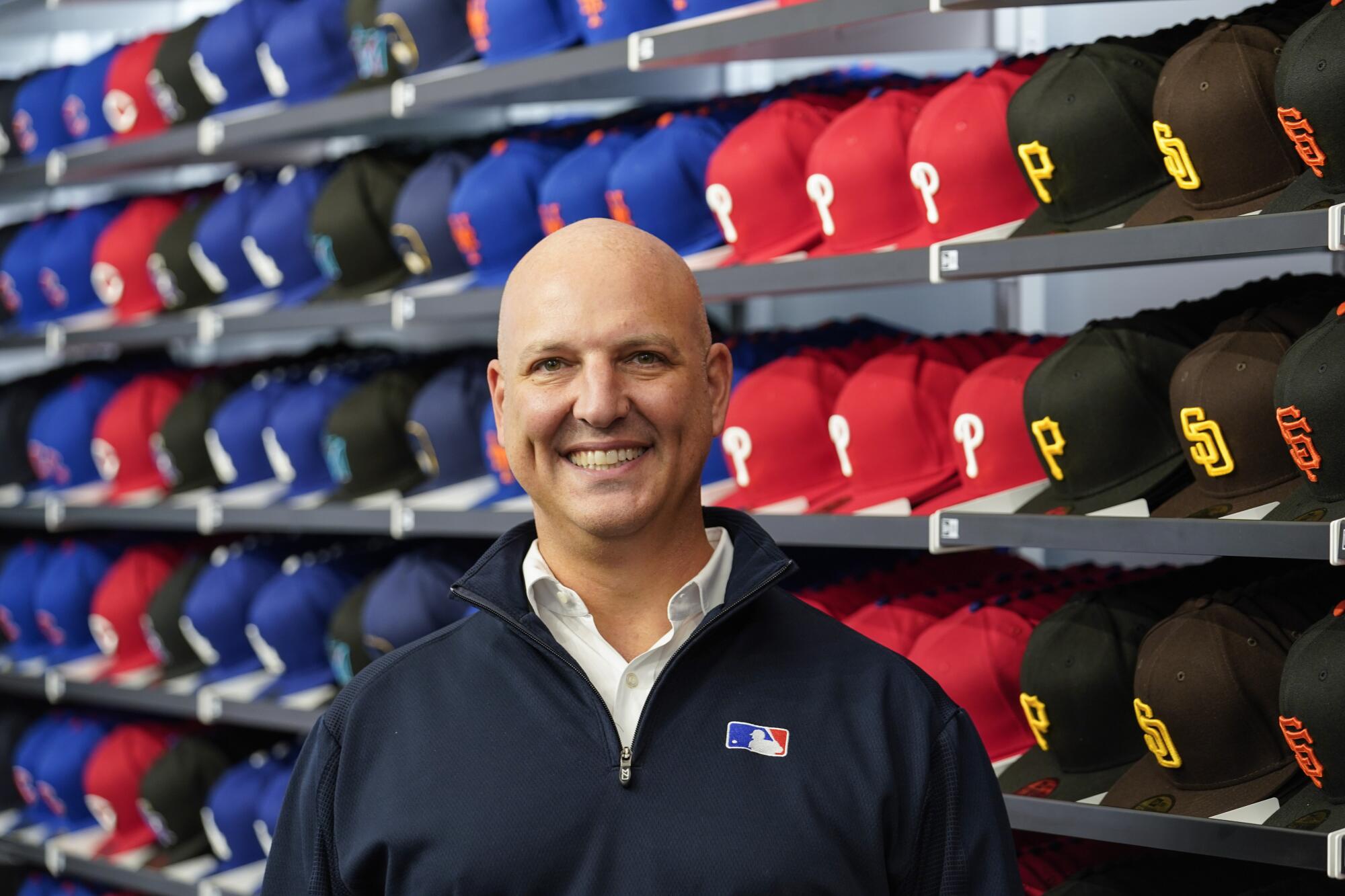
Said Manfred: “We need to continue to be aggressive about making sure that the product we put on the field is compelling for a generation that seems to have significantly shorter attention spans.”
That goes for the ballgame, but also for the ballpark. The Dodger Stadium renovations have included the addition of playgrounds on the reserve level and beyond center field, as well as drink rails and bars and social spaces that encourage fans to gather, rather than remain confined to one seat for several hours.
“A lot of clubs have installed party decks and subscription tickets and ways to experience baseball that are more consonant with a 25-year-old’s life,” Sword said, “than buying an 81-game package for a seat in Section 313.”
Baseball sells itself as a family sport, but affordability has become an increasingly urgent concern in marketing to a younger audience. The Angels offer family packages of four tickets, four hot dogs and four drinks for $44, and a “Junior Angels” club membership includes four tickets and assorted merchandise for $20. The Angels also offer T-shirts and caps for $9.99.
However, the average cost for a family of four to attend an MLB game last year — tickets, hot dogs, drinks, caps and parking — was $267, according to Team Marketing Report.
Manfred acknowledged that affordability is “particularly important for us.” Teams set their own ticket prices and kids’ programs, but the league said it donated more than 700,000 tickets to youth groups across the country last year.
Garden loves the league’s partnership with Nike, in part because of how well the company markets players, but MLB needs to solve its perennial struggles in marketing players on its own. The league can leverage influencers, actors and musicians in integrating the sport into popular culture, but ultimately the best players should be part of popular culture as well.
Baseball’s torch has been passed to a new generation.
Shohei Ohtani will make an estimated $65 million in endorsements this year, according to Sportico, the same as Lionel Messi and Tiger Woods made last year. The second-highest endorsement revenue for an MLB player: Bryce Harper, at $7 million.
“To me,” said Timpone, the league’s marketing chief, “I think the No. 1 thing in getting people to buy a ticket are players.”
On that score, the league is doing pretty well, in no small part because of its work in building a younger fan base. Last year, for the first time since 2017, MLB sold more than 70 million tickets. The record: 79 million tickets sold, in 2007.
“When you see the age of your average ticket buyer going down, that’s a really significant shift,” Manfred said. “When you’re talking about 70 million tickets, you really have to move in order to bring that median down. So I think that’s a really encouraging number for us.”
More to Read
Go beyond the scoreboard
Get the latest on L.A.'s teams in the daily Sports Report newsletter.
You may occasionally receive promotional content from the Los Angeles Times.

